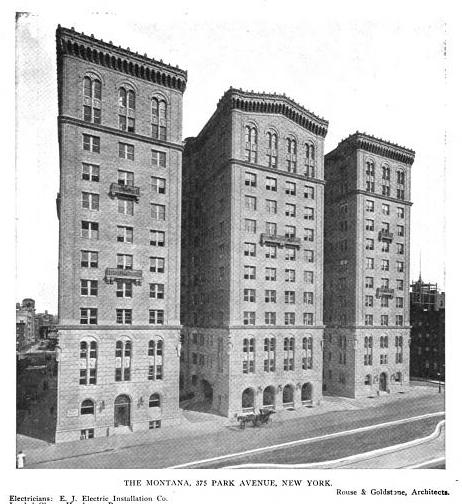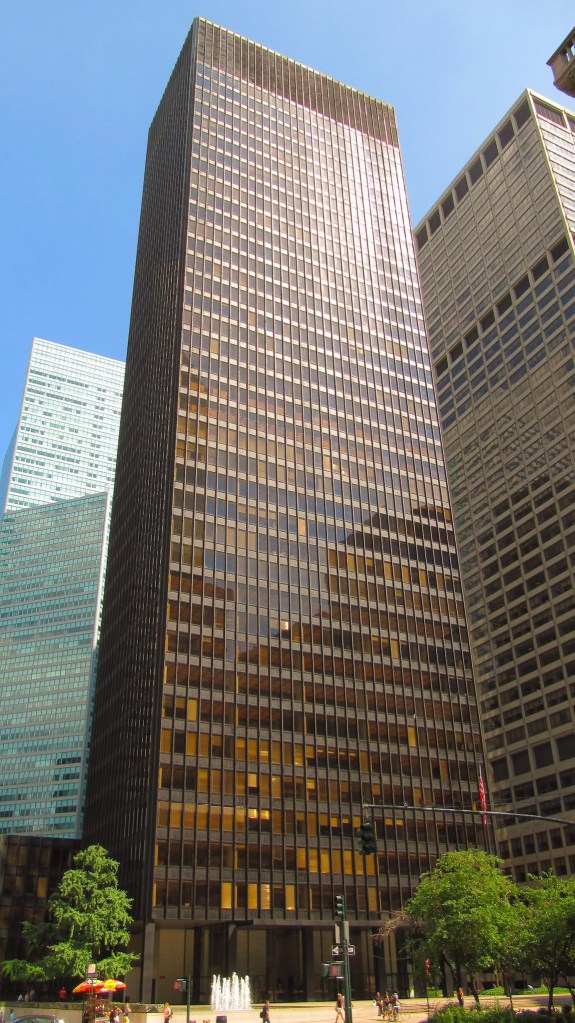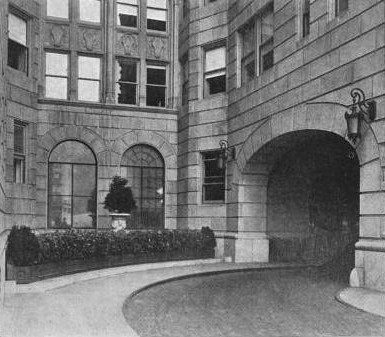
1859
Steinway & Sons piano finishing factory at the site is built on the east side of Park Avenue between east 52nd and East 53rd Streets.
1906
The Steinway & Sons factory site is sold.
1912-19
Rouse & Goldstone design the Montana, an apartment building spanning Park Avenue between 52nd and 53rd Streets.
1951
The Montana is sold to the Seagram Company and demolished.
1956
Ludwig Mies van der Rohe and Philip Johnson’s Seagram Building rises at the site. The architects were chosen primarily by Samuel Bronfman’s daughter, Phyllis Lambert.
The New Yorker notes a specific facet of the ongoing construction in the Talk of the Town section of its June 2, 1956, issue—specifically the portholes cut into scaffolding surrounding the site that gives passersby a peek at the site. “In the gray fencing that encloses three sides of the Seagram site, six sets of Plexiglas portholes have been installed,” the writer notes. “Above each set of portholes is a small but powerful loudspeaker, and out of it pours a stream of transcribed messages from such distinguished personages as Faye Emerson, Hy Gardner and Danton Walker, who plug the about-to-be building and themselves.”

1958
The Seagram Building is completed, marking an important stage in Park Avenue’s transformation from residential to a destination for high-profile offices and corporations.
1988
On May 18, the Landmarks Preservation Commission holds a public hearing regarding the Seagram Building’s proposed designation as a landmark.
1989
The site is officially declared a landmark on Oct. 3, 1989.
2000
Insignia/ESG sells the 38-story office building to RFR Holding for owner TIAA-CREF for roughly $375 million.
2013
Through nearly $1 billion in financing, which is later securitized, RFR takes full ownership of the building, which had been owned in a joint venture.



